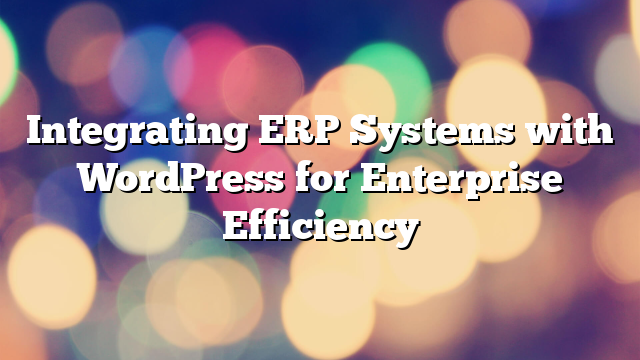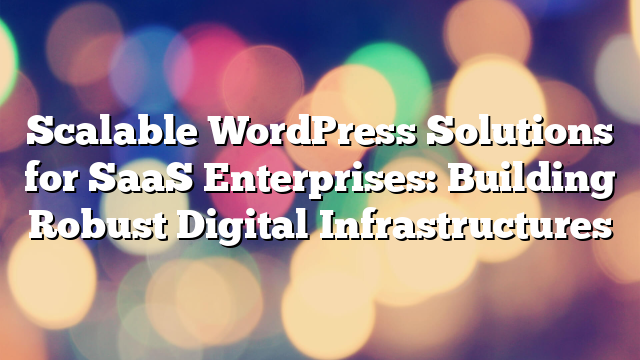Scaling Enterprise WordPress with Microservices Architecture
13.04.2025

What Is Microservices Architecture and Why It Matters?
Microservices architecture is a method of developing software systems as a suite of small, independent services that communicate over APIs. In an enterprise WordPress environment, this approach allows large-scale websites to become more agile, scalable, and maintainable by breaking down complex functionalities into standalone components.
Applying Microservices to WordPress Projects
Traditionally, WordPress is considered a monolithic platform. However, modern development practices now allow enterprise teams to decouple key features—such as search, user authentication, e-commerce logic, or even content delivery—into microservices. These services can be built with technologies like Node.js, Python, or Go, and then seamlessly connected back to WordPress via its REST API or GraphQL.
When Should Enterprises Consider Microservices with WordPress?
Microservices are especially beneficial when managing high-traffic websites, multisite environments, or complex integrations. For example, if you’re running a multilingual publishing platform with custom editorial workflows, separating those workflows into services ensures faster updates and easier maintenance without disrupting the core CMS.
Benefits of Using Microservices in WordPress Ecosystems
Some of the key benefits include:
- Improved scalability: Individual services can scale independently based on usage patterns.
- Better fault isolation: If one service fails, the rest of the system remains operational.
- Faster development cycles: Teams can work on different services simultaneously using different stacks.
- Easier integration: Microservices provide clear endpoints for integrating external APIs, CRMs, ERPs, and more.
Use Case Example: Headless WordPress + Microservices
Let’s say a company wants to use WordPress for content management while leveraging a React frontend and separate services for search, recommendations, and user profiles. WordPress serves as the content repository, while each microservice handles its job independently. This approach results in a faster, more modular application with enhanced user experience.
Challenges to Watch Out For
While microservices offer great flexibility, they introduce complexity in orchestration, security, and deployment. Enterprises must use tools like Docker, Kubernetes, and service meshes to manage containers and monitor communication. Additionally, thorough documentation and DevOps pipelines are crucial for a reliable architecture.
Why WordPress Is Ready for Microservices
Thanks to its REST API, GraphQL support, and compatibility with decoupled frontends, WordPress is fully capable of playing the central role in a microservices-based infrastructure. With the right development expertise, enterprises can extend WordPress far beyond its traditional scope.
Conclusion
Microservices are revolutionizing enterprise web architecture, and WordPress is not an exception. When thoughtfully implemented, this model boosts performance, simplifies maintenance, and empowers enterprises to adapt quickly to evolving business needs. The future of scalable WordPress lies in modular, service-driven architecture.
Need help implementing microservices with WordPress? Vipe Studio offers tailored enterprise solutions to help your organization scale with confidence. Book a consultation today to explore what’s possible.



